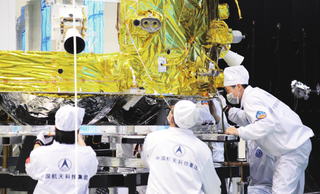
John Bridges
At the Space Research Centre we use a range of techniques (scanning electron microscopes, transmission electron microscopes, focused ion beam, Diamond synchrotron) to study early Solar System processes related to the origin of asteroids and comets, and the evolution of Mars. In particular, we study cometary samples returned by the Stardust mission, asteroid samples returned from S-class asteroid Itokawa by the Hayabusa mission, and martian meteorites including the nakhlites with their unique hydrothermal assemblage that we have characterised, and the NWA 7034 regolith breccia.
We also use remote images and spectral data to study the surface of planetary bodies, particularly the evolution of the Mars surface and climate. For instance, the CASSIS stereo, colour camera, which is part of the ExoMars Trace Gas Orbiter for 2016 is one of the new ways we will study the Mars surface. As a member of the European Landing Site Selection Working Group I look at the places where we may land the ExoMars 2020 (launch) rover, in particular using HiRISE imagery.
Bridges is also a participating scientist PI and ChemCam team member on the NASA Mars Science Laboratory mission, one of the most ambitious planetary missions ever achieved. You can follow the progress of Mars Science Laboratory by reading my blog and see more about our Mars surface and meteorite research.

